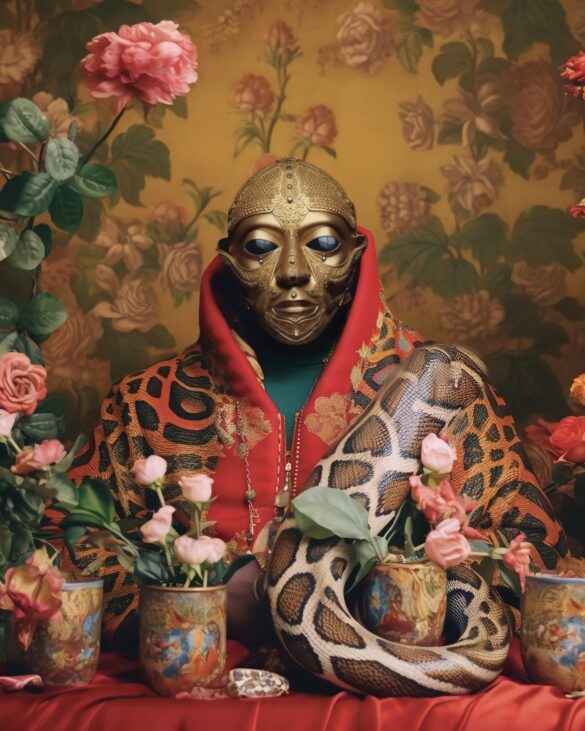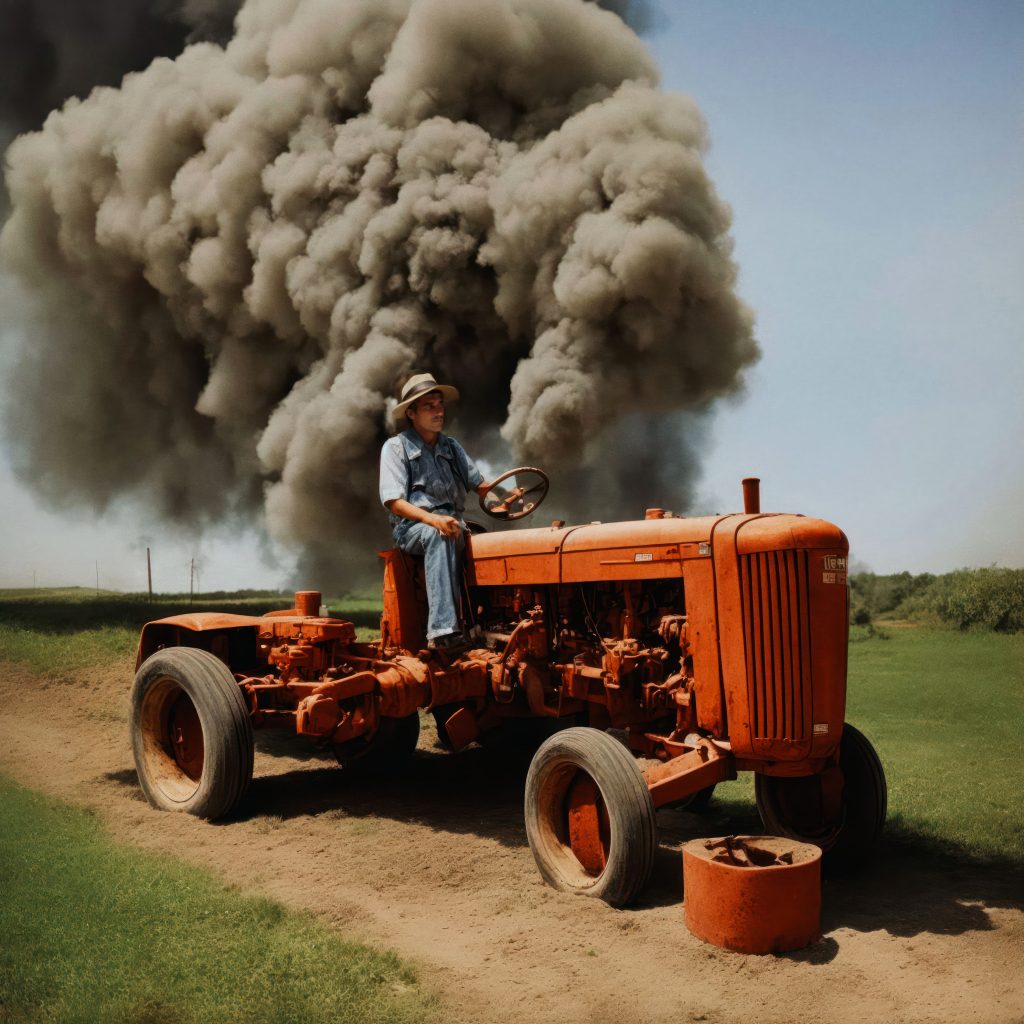At the height of the crypto boom, NFTs hit big in the entertainment sphere. Celebrities from Justin Bieber to Reese Witherspoon flocked to them, with PFP (profile pic) collections such as Bored Apes and World of Women landing endorsements from the likes of Paris Hilton and Madonna. And while the NFT market slump has seen these high-profile Web3 evangelists suffering huge losses, Hollywood, it seems, is not yet done with NFTs.
Since 2021, at least one major talent agency has been actively signing up Web3 and A.I. artists—and continues to do so, never mind the crypto crash.
William Morris Endeavor, which can claim a history that stretches as far back as the 19th century, predating the motion picture boom in Los Angeles, boasts a top-flight stable. Actors such as Matt Damon, Denzel Washington, and Felicity Jones fill its roster, as do musicians from Adele to Snoop Dogg.
But over the past two years, that list has expanded to include some 50 digital creatives such as Olive Allen, Krista Kim, Claire Silver, Si Parmeggiani, and Andre O’Shea, in addition to the platform SuperRare and the gallery Bright Moments.

Si Parmeggiani, Serpentine (2023). Courtesy of the artist.
The agency’s Web3 push has been spearheaded by Chris Jacquemin, WME’s partner and head of digital strategy, who said he had been eyeing the sector since 2020 as an area of growth.
“The sheer volume of new artists, artworks, and platforms is growing. Think about the impact that YouTube had on a generation of viewers—it completely changed the business,” he told Artnet News. “I think we are seeing the beginning of something similar here. The volume of work we will be exposed to is just exploding.”
It’s a bullish stance that reflects in WME’s roster of Web3 talents. Among them: SuperRare continues to dominate NFT trade, Kim remains a leading proponent of the metaverse, and the anonymous Silver is fast-rising in the A.I. art arena.

Courtesy of Krista Kim.
“Technical creativity is certainly at the top of our list,” Jacquemin explained of the factors determining which artists it signs. “I’d say a very close second is their community. It is the clearest indication of their ability to impact culture. Our goal is to help them scale that.”
Such a pitch was attractive to Roope Rainisto, the Finnish A.I. artist whose name-making NFT collection, “Life in West America,” moved at least $3.5 million in sales volume when it dropped in February. He signed with WME a few months ago.
“Although I’m currently known for being an A.I. artist, my ambitions are not limited to a particular niche,” he told Artnet News. “As a European artist, having representation in the U.S. through WME opens doors, giving me access to people I would never otherwise get in contact with and who would never hear of me otherwise.”

Roope Rainisto, The Farmer NFT, part of the series “Reworld.” Courtesy of the artist.
WME’s other goal is to onboard its existing Web2 clients, hence its signing of companies like Transient Labs, billed as an “innovation platform for Web3 creators.” Jacquemin brings up successful PFP and POAP (Proof of Attendance Protocol) projects initiated by its more “traditional” clients, such as former NBA player Scottie Pippen and producer DJ Griffin.
The agency is not the only one that has bet on the Web3 or digital space. United Talent Agency already represents blue-chip NFT collections World of Women, Bored Ape Yacht Club, and Deadfellaz, and in January, inked a deal with Proof, the creator of Moonbirds. Meanwhile, Creative Artists Agency has snapped up Cool Cats and Jenkins the Valet, a Bored Ape derivative.
Of course, what’s being leveraged there is art as much as I.P.—and the opportunities to deploy it across fields from sports to entertainment, while tapping an already existing community. According to Jacquemin, WME connects its artists to opportunities that “are typically more difficult for an individual to access,” while acting as “a filter for them so they can focus on their art.”

Robbie Barrat, A.I. Generated Nude Portrait #7 Frame #275 (2018). Courtesy of SuperRare.
But what of the chilly crypto climate?
“Yes, things ‘cooled off,’ but it’s still 70 times what it was just a couple of years ago,” he said, further explaining how the NFT market’s valuation went from $350 million in 2020 to $41 billion in 2021 to about $25 billion in 2022. “It feels like we have shifted from a sprint to a marathon.”
Collectors today, in his opinion, have shifted toward “fundamentals,” homing in on works by “artists who have created something truly innovative or captured an important moment in time.”
“As new technologies continue to evolve and more collectors become interested in this space, there is great potential for even more creative innovation and a rise in demand for the notable artists making a name for themselves,” he said. “This focused attention on the most original creators in the space will undoubtedly lead to an increased acceptance into the traditional art world.”
He admitted surprise that “some of the most vocal people in this space have cycled out of it,” adding: “Our focus has been on those who truly see this as a long-term commitment. We certainly are here to stay.”

Olive Allen. Photo: Julien Roubinet.
Olive Allen, a New York-based NFT artist, is one such creator, represented by WME, whose involvement with Web3 preceded its boom and looks to outlast market forces.
“The way I see it, I’ve always represented myself,” she told Artnet News. “In the course of my career, I have been working with various people, organizations, and platforms. Ideally, it is a collaborative process with aligned incentives… For me, being an artist means striving to achieve mastery and commitment to creation versus consumption. Artistry as a creation itself takes many different forms: from making a painting to building a company.”
For Rainisto, too, determining the staying power of Web3 art lies in reaching beyond the market’s bounds and categories, to usher in new forms of expression and collaboration.
“The future will bring in convergence in many ways: a creator won’t have to be known ‘only’ as a writer, or musician, or actor, or whatever you choose to call yourself,” he said.
“WME represents musicians and filmmakers and authors and comedians—people willing to push and express themselves. This diversity and the potential for collaboration attracted me to WME. The merging of the old and the new.”
Additional reporting by Richard Whiddington.
Follow Artnet News on Facebook:
Want to stay ahead of the art world? Subscribe to our newsletter to get the breaking news, eye-opening interviews, and incisive critical takes that drive the conversation forward.
- SEO Powered Content & PR Distribution. Get Amplified Today.
- PlatoData.Network Vertical Generative Ai. Empower Yourself. Access Here.
- PlatoAiStream. Web3 Intelligence. Knowledge Amplified. Access Here.
- PlatoESG. Automotive / EVs, Carbon, CleanTech, Energy, Environment, Solar, Waste Management. Access Here.
- PlatoHealth. Biotech and Clinical Trials Intelligence. Access Here.
- ChartPrime. Elevate your Trading Game with ChartPrime. Access Here.
- BlockOffsets. Modernizing Environmental Offset Ownership. Access Here.
- Source: https://news.artnet.com/market/william-morris-endeavor-wme-hollywood-agency-web3-nfts-2348370



